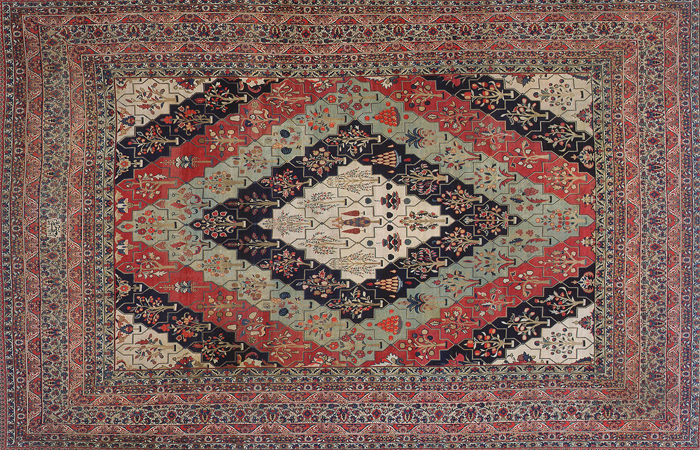If you are looking for an attractive and original design for your home, we recommend the Kerman rug. This rug has attracted the attention of many noble people with its gorgeous patterns and colorful frames. But the question is how to recognize this rug from others. Here, we will introduce you to this rug’s features, characteristics, and history.
Where is Kerman?
Kerman or Kirman province, one of Iran’s most historical provinces, is located southeast of Iran. This province has many attractive points, and one of its critical industries is rug weaving. The industries of Kerman province are divided into two categories: Hand-made and machine-made. Apart from pate embroidery, shawls, pate, and cashmere are not as prosperous as they used to be. Also, rug, Jajim, and Kilim weaving are among the common industries of this province.
The incredible Kerman Persian rug is a treasure that is cherished and respected worldwide. Created by genius artists with remarkable rug-making talent, Kermans are among the most beautiful Persian rugs ever. They have a vibrant and celebrated history. The makers of Kermans take great pride in their work and will never weave the pattern of another city.
The History of Kerman Rug
The Province of Kerman, in south-central Iran, is where the nearly 1,000-year-old Kerman Rug is produced. It is thought that Kerman’s scarf had an impact on the region’s rug-weaving business. In fact, the designs of some early Kerman rugs were inspired by Kerman shawls. A variety of motifs were gradually incorporated into the Kerman rug weaving industry.

Kerman rugs were the first rugs made available to foreigners. Kerman rugs have captivated Europeans since they arrived in Persia. In fact, the European market impacted the rug-weaving industry in various ways, and Kermani rug weavers created designs and themes that their European customers enjoyed. Famous rug designers such as Hassan Khan, Ahmad Khan, and Zaman Khan are the influencers of some of the most well-known Kerman rug designs, such as Gol-farang, goldani, Zillussltan, and Tasviri rug designs.
The Characteristics of Kerman Rug
The most prominent features of the Kerman rug are:
- This region’s incredible quality of rugs is well known and respected worldwide.
- These exquisite rugs are the only ones made with the renowned asymmetrical Persian knot.
- Except for very exquisite pieces, all rugs’ foundations (warp and weft) are made of cotton.
- Three pood, or three woof rugs, is the common name for Kerman rugs.
- Three horizontal stripes of thread follow each line of knots.
- The middle wisp in Kerman rugs is thinner than the first and third.
- Various colors and vivid hues distinguish Kerman rugs from other area rugs.
- Dark and light burgundy, beige, burnt red, copper, navy blue, baby blue, shades of green, and gold are the most popular hues in Kerman handcrafted rugs.
- Flowers are frequently used in the designs of Kerman rugs, which also often contain a medallion in the middle and a border with a floral or architectural theme.
All Persian Rugs are Worthy
Rugs provide the warm touch that every room requires. These intricate and delicate decorations are beautiful to look at and appreciate. Each Persian rug, especially the Kerman rug, offers unparalleled durability and comfort to its owners. Kerman rugs, one of Persia’s high-quality rugs, are a prime example that fully reflects these characteristics.
If you own a Kerman rug, we invite you to share your experience with us in the comments. Thanks in advance.
